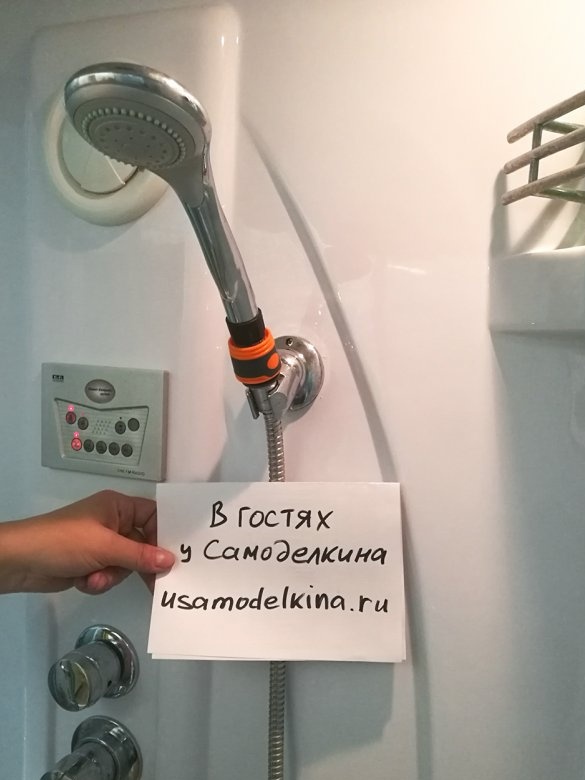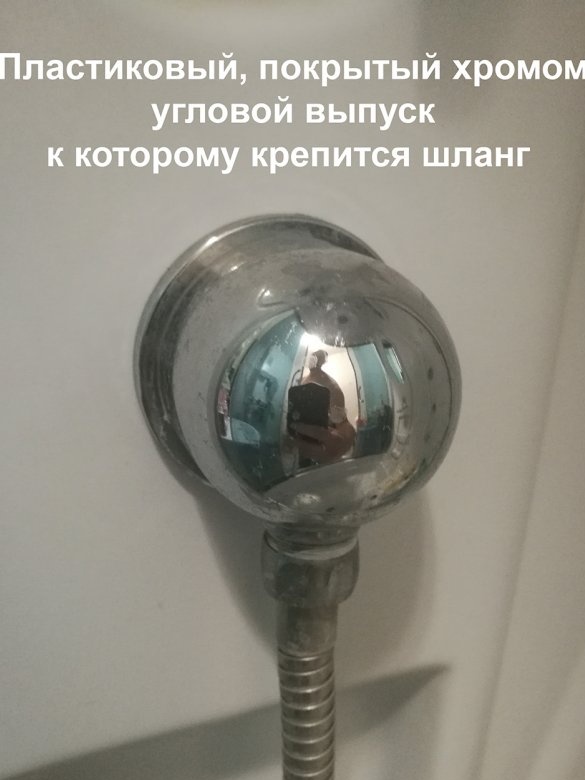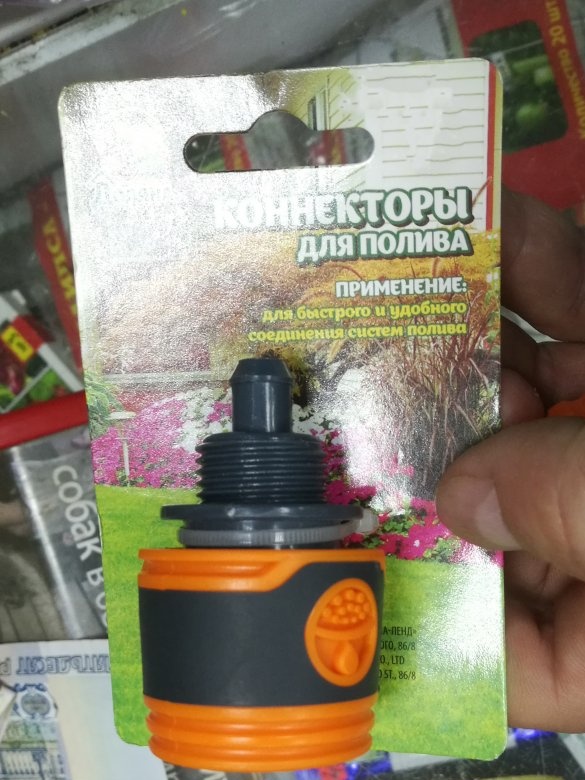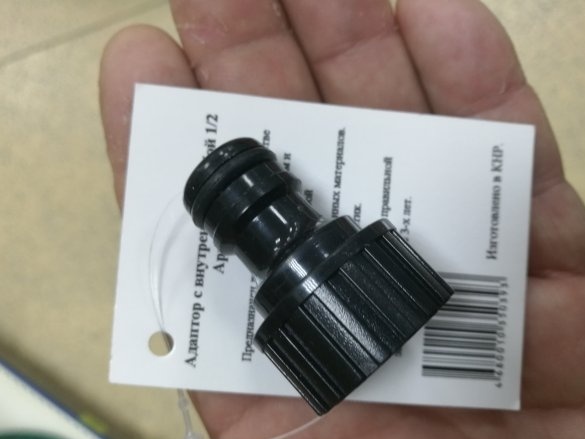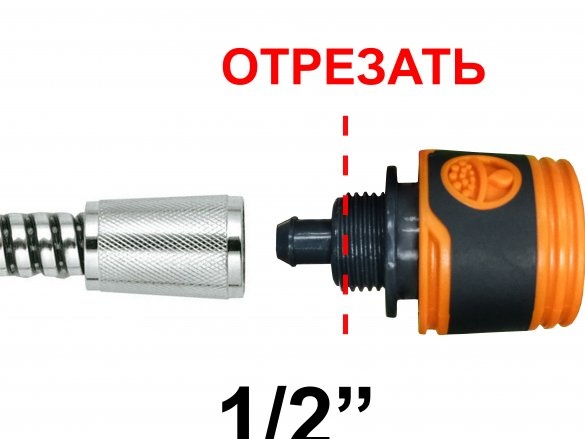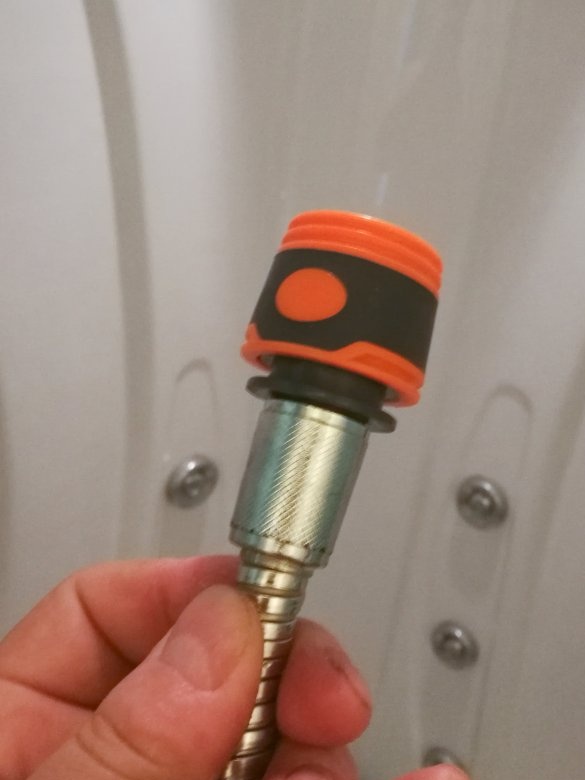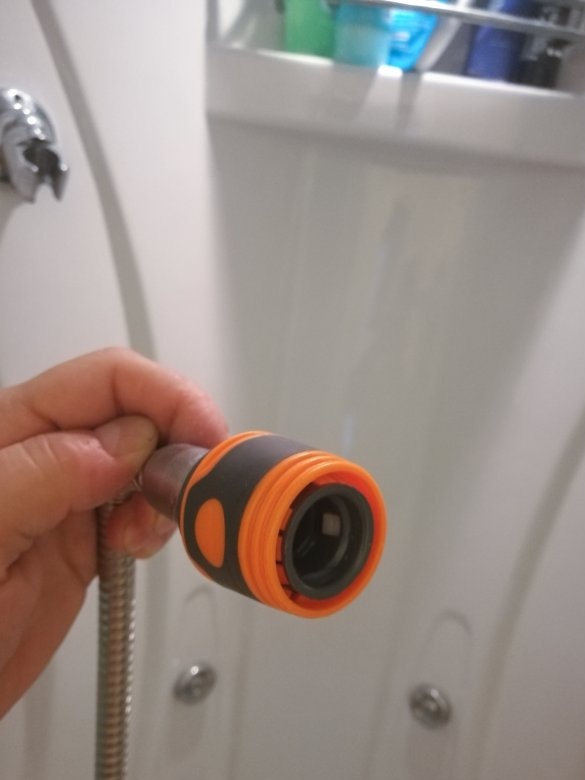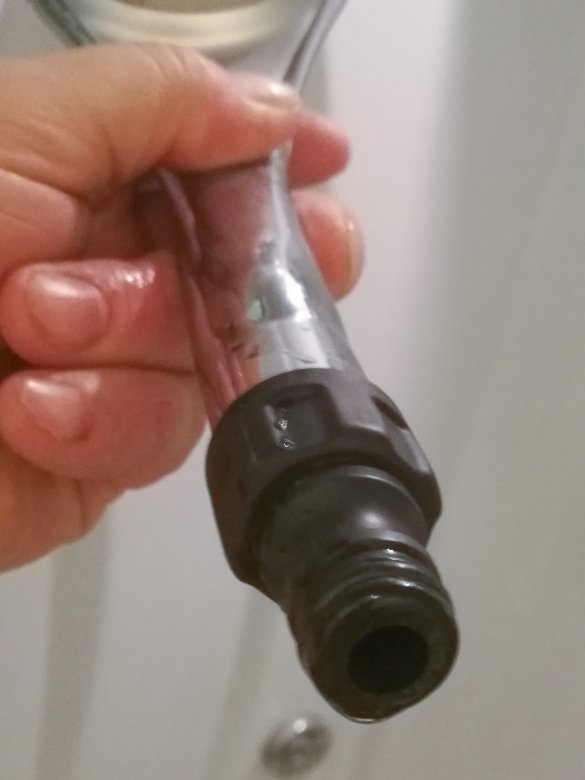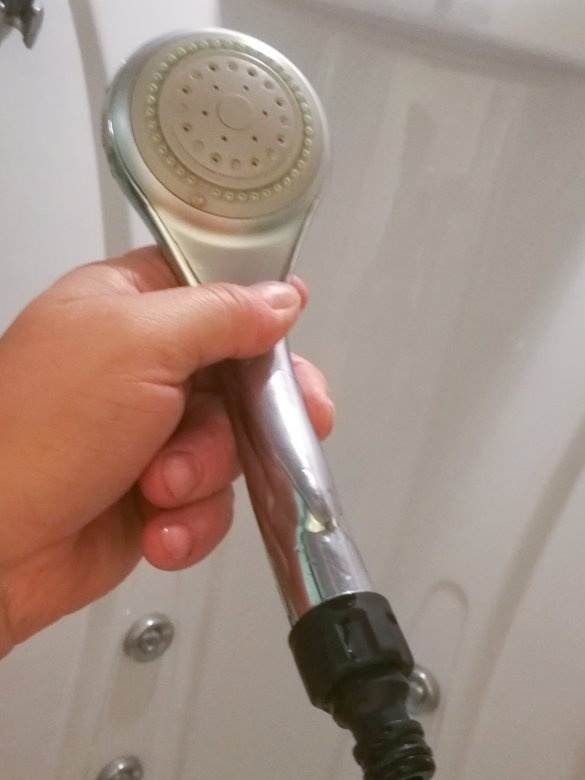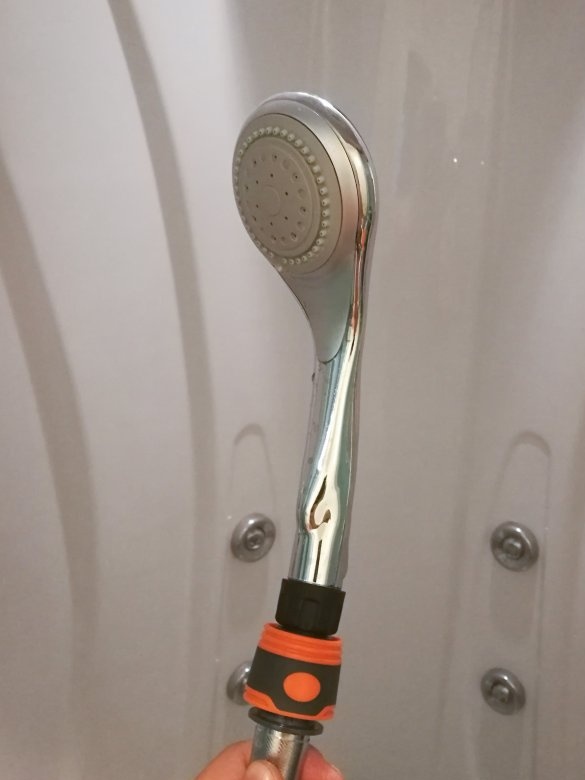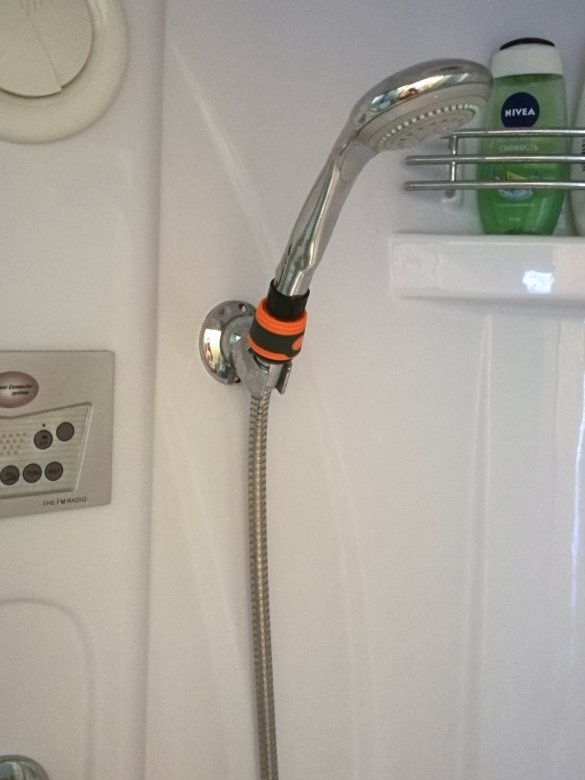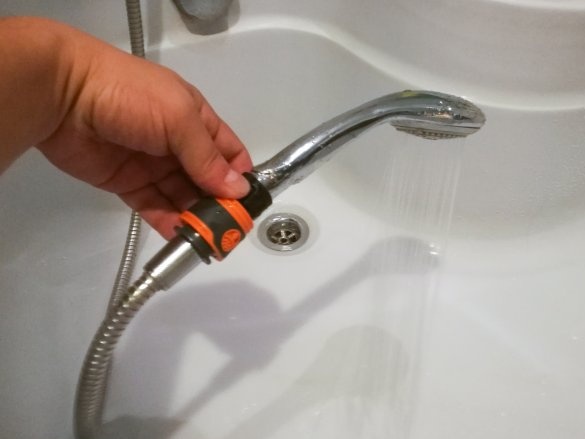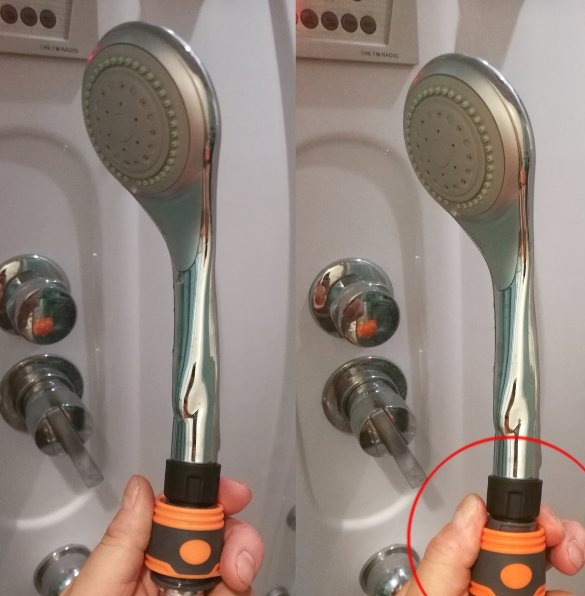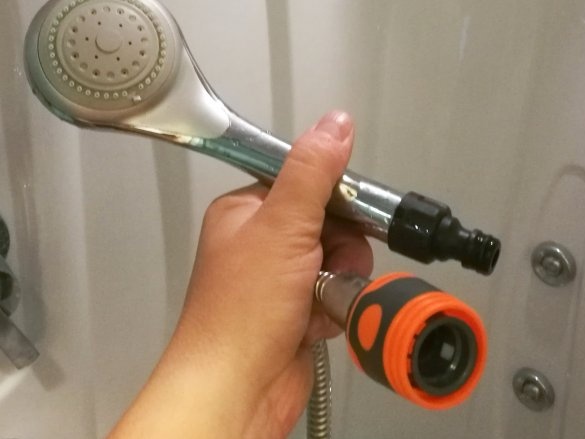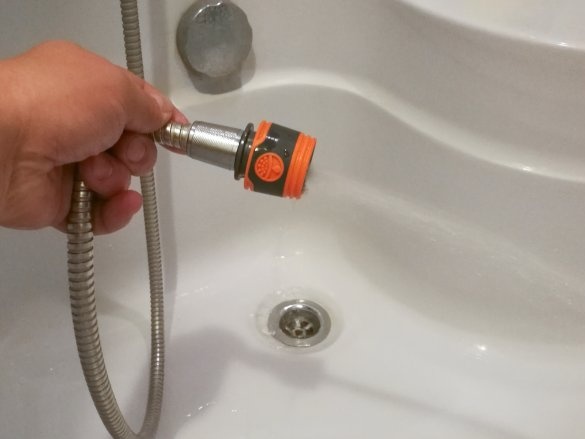This revision will be useful to many owners. showers.
Often there is a need to fill the pallet (if it is deep) with water, or to draw water into another container (for example, a plastic bucket).
BUT there is a problem: in 90% of showersin the mixer NOT provided for tap (spout), there is only a top rain spout, and a hose with a watering can.
By the way: filling a container or a tray through a watering can is extremely slow. Through the spout of the tap, the process will go much faster, and the water temperature is easier to control, due to the fact that the water (if you need hot) does not have time to cool down while it is typing.
It was decided to finalize, or if you want, modernization.
One of the options considered: insert of the additional crane (spout) with the switch. This option had significant drawbacks, and it is worth writing about them in more detail.
Additional elements will simply interfere with the inside of the cabin, because placement is required exactly at the bottom of the shower wall (the sense of installing a spout is highly absent). It’s quite technologically difficult to put a compact faucet, and there are several reasons for this: the thickness of the plastic shower does not provide for the installation of conventional taps and mixers, it is possible to install only versions for showers, which in this case are not suitable for solving our problem and that’s why :
In our case, a mixer is NOT required, since hot and cold water is mixed using a standard mixer installed in the shower.
We need a SWITCH between a hose with a watering can and our "crane".
On sale there are switches referred to as - DIVERS, for switching "shower-spout". They are quite compact, but all the compactness "comes to naught" when the selection of adapters (fittings) begins, to connect this device, it turns out very ugly and cumbersome.
I also did not want to connect this whole tricked-out structure: a diverter, a switch with a spout and all fittings, to the plastic (corner) outlet from the wall to which the hose is connected, because the plastic thread is quite fragile and if the stationary position does not cause problems, then a random force a touch (for example: hit with a plastic basin, rested with your hand) - simply break off the threaded connection.
Decision It came - from where they did not wait: Cattle (Quick Detachable Connection) installed between the hose and the watering can.
If anyone does not know:
There are a lot of variants of the BRS, for different diameters of pipes and hoses.There is also a high pressure made of metal, there are hundreds of options in plastic design for garden use.
An option was chosen for the garden, as in my case, it is not required to keep high pressure from the BRS pairing: the shower hose either emits water or is blocked by a standard faucet of the shower mixer, so there is no excess pressure in the BRS.
I bought BRS for a garden hose on 1/2 (with an external carving), reply part same 1/2 thread but internal.
1) We take a part with an external thread - we cut off the fitting from it, which was used to "fit" a hose on it.
2) We pass the cut point with a drill with a diameter of 9.5 mm (in order to remove the resulting ledge)
3) We clean the file with the end face of the thread
4) We screw this part into the shower hose, instead of the watering can (also remembering to put the standard rubber gasket-ring).
5) We screw the counterpart all the way to the thread of the watering can.
Our revision is ready.
It is worth noting that eminent manufacturers of plumbing equipment make similar detachable connections on hoses with watering cans (for example GROHE), but the prices for such products are very high
In the connected state, the BRS is an ordinary shower head, which can be used in the same way as before the modernization.
Now, when you need to fill a container or pour water into the pan, we simply open the quick coupler and use a hose with a good direct water flow, the temperature we need (!). When finished, reconnect the watering can with the hose.
I hope my revision is useful to someone.


